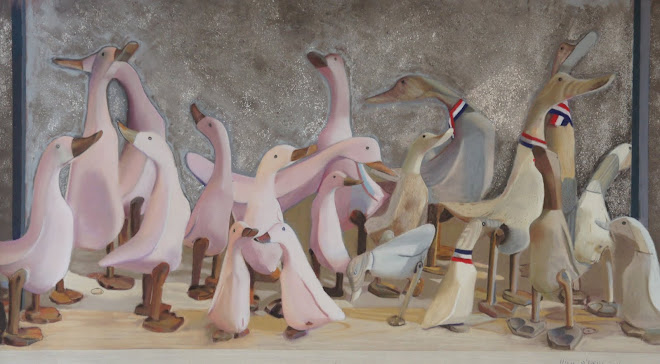Tea is processed from the leaves of a species of camellia. The tea species is not nearly as decorative as the varieties cultivated for garden display, but that's no reason for not inventing a link in this painting. The tray cloth was embroidered by my good friend and neighbour Odette Bougouin. As usual the support is Clairefontaine's Pastelmat, 15.5 x 12 ins or 40 x 30 cms,
This is the initial sketch blocked in roughly with a view to seeing values and hues.
Initial shading on teapot, and red hues including carmine and madder lake picking out the blossoms.
I usually like to see the background at an early stage to get an idea of the extremes of contrast, but not so much that it will get in the way of the subject and dirty the lighter colours.
With the camellias defined, and the dark green leaves, I started to shade in the traycloth over the underlying colours that are never entirely blotted out. The pastels here were initially the warm Schminke greys.
The cloth is getting some shadows laid in, and shades from Blue Earth yellow range are modifying the greys.
This is just the background shading filled in, in a mix of Rembrandt and Sennelier black, and Girault dark green, blended together. I went back in to the blue pattern on the teapot and refined it, after further darkening the shaded areas on the porcelain.
The base of the pot is done. Shading of the cloth is finalised, and the details of the embroidery and lace edge added in palest grey and a little white pastel pencil that is less white than the Sennelier white highlights on the porcelain. It just needs to be signed when it has rested for a while.
Monday, February 17, 2014
Saturday, February 15, 2014
Pastels from the Met
 |
| Dirge of the Three Queens - Edwin Austin Abbey - 29 x 45 ins |
Labels:
Pastels from the Met
Subscribe to:
Posts (Atom)








